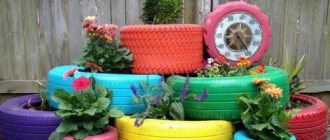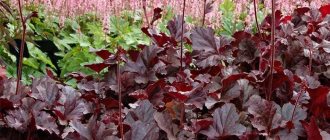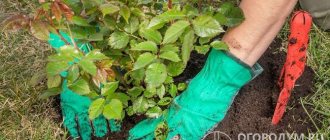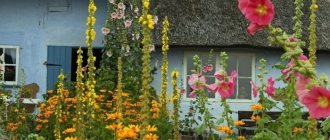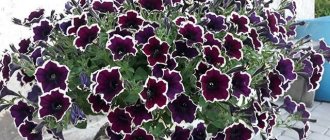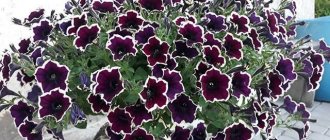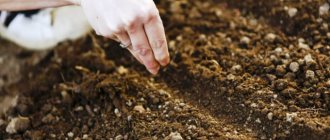Despite the fact that in almost every garden beautiful, bright varietal flowers and shrubs delight the eye, we cannot pass indifferently past their modest forest relatives. Surrounding ourselves with lush floral splendor, we lose the thread of natural harmony. And simple forest flowers give it to us again. This is probably why many of us want to move a “piece of forest” to our site. And it is quite possible to do this, because wild plants, for the most part, are unpretentious. They are well adapted to their natural habitat. They do not need weeding, additional watering, or artificial pollination.
However, when planting forest flowers, one very important factor must be taken into account - their compatibility with new conditions. For example, if a tall bell, accustomed to shady, damp places, is planted in a sunny flowerbed, then in the first year it will become small, and after a year it may not bloom at all. And its neighbors marigold, wintergreen and whitewing can die immediately in such conditions. Also, not everyone tolerates loosening the soil well. Weeds around Lyuba bifolia should not be weeded out, but periodically cut short. But wild-growing bulbous plants are ok with weeding. Some flowers may not have enough space in a cramped flower bed, while others may become very large and difficult to get rid of. Therefore, before planting wild plants on your site, you need to study how they grow in their natural habitat.
Forest plants prefer moist soil with a large proportion of leaf soil. It is necessary to plan their planting so that the chosen location is as close as possible to their natural growing conditions. If the plant becomes larger every year, grows and blooms profusely, then these conditions are suitable for it.
Let's take a closer look at some of the green inhabitants of the forest.
Fern
It will make an excellent ensemble in combination with forest geranium, since, like it, it prefers shady areas. The roots of the plant need air - so the soil in the area where you plant the fern should be loose. The soil under the fern must be constantly moistened, but water should not stagnate, ensuring the plant has good drainage. Add mineral fertilizers to the water twice or three times a season.
From the area where the fern grew in the forest, you need to take some soil and add it to the soil in which you will plant it.
Forget-me-not
In the forest, forget-me-not prefers to settle in shady areas, but in the garden it can also live in the light. However, in this case, its flowering time will be halved - from 40 to 20 days. In addition, forget-me-not is not afraid of drafts, which means it can be planted in the open space of the garden plot.
You cannot plant forget-me-nots in soil rich in clay and sand: the root system of this flower is not adapted to them.
The plant loves soil moderately rich in vitamins and fertilizers, moist, but with good drainage to avoid root rot.
Cultivated species
Decorative bushes are chosen to decorate the garden according to different principles.
But most often, preference is given to plants that at different times of the year are covered with caps of flowers that spread a unique aroma. First, we will consider the cultivated shrubs that need to be looked after:
- Lilac. This shrub can have different bud colors. Most often, lilac is a tall plant with pointed heart-shaped or broadly lance-shaped leaves. Flowering begins in May and lasts for three weeks. The shoots are gray-brown in color, the inflorescences are brush-shaped, simple or double. Breeders have created many species and varieties. The main advantage of lilac is its winter hardiness and the ability to grow throughout Russia. After flowering, it is necessary to cut off the inflorescences so as not to spoil the decorative effect of the bush. It can be propagated by root shoots.
- Chubushnik. Almost immediately after the lilac, another plant with fragrant flowers blooms. This is mock orange, which is often called garden jasmine. The flowers are white and always full of nectar-loving bees.
- Garden jasmine is a winter-hardy shrub, almost never gets sick, and is not damaged by harmful insects. That is why mock orange attracts the attention of gardeners and landscape designers. Moreover, you can select varieties with different flowering periods to ensure the decorative appearance of the garden for a long time. To rejuvenate garden jasmine, like lilacs, you need to cut out shoots and form a crown. In the middle of the bush, shoots are removed to prevent thickening.
- Rowan-leaved fieldfare. The height of the plant, depending on the variety, can be a meter or two. The leaves of the fieldfare are carved, the bush blooms in July and pleases with inflorescences for three weeks. The inflorescences are lush and white. In autumn, the bright golden foliage attracts attention. Fieldfare is unpretentious, not capricious, and easy to care for. There is no need to cover for the winter, as the shrub is frost-resistant. The only drawback that gardeners pay attention to is the strong growth of shoots. Therefore, even during planting, the root system must be limited by slate and plastic borders.
- Bladderwort. Ornamental shrub, beautiful at any time of the year. Depending on the season, the leaves are green, golden, or purple. In mid-summer, the vesicular carp becomes covered with white corollas. In autumn, the plant is decorated with reddish-purple fruits. Caring for the plant is not burdensome, since the shrub is unpretentious. Can be grown outdoors or in the shade. But it is in the sun that all the decorativeness of the vesicular carp is revealed.
- Japonica. The ornamental shrub, although it has edible fruits, is grown mainly for its colorful flowering and lush crown. The color palette is very diverse - red, yellow, orange shades. The height of Japanese quince varies between 0.5-2 meters depending on the species. The shrub is frost-resistant and light-loving; drought does not affect its decorative value. Feels great on soils of any acidity.
- Triloba almond (Louisiana). The plant is heat-loving, but with good shelter for the winter it can be planted in harsh climates. And grow it like a tree or a bush, depending on how to form the crown at the initial stage. The flowering plant attracts attention with pink, crimson or coral buds. Blooms in May. It is better to plant in places protected from the wind.
Lupine
There is an opinion that the Latin name of this flower - Lupinus - is related to the word lupus, which translated into Russian means “wolf”. Lupine is associated with the wolf because this plant can survive in almost any conditions. It can grow up to 120 cm in height. In the garden, lupins grow on loamy, slightly acidic or slightly alkaline soils and prefer well-lit places. If the soil is highly acidic, gardeners recommend liming it once every 3-4 years with finely ground dolomite or lime flour at the rate of 5 kg per 1 sq.m.
High acidity of the soil is indicated by the presence of plants such as horsetail, buttercups, and coltsfoot on the site.
In the first year of its residence in the garden, lupine only needs to loosen the soil and remove weeds. In the spring of the second year, it needs to be fed with mineral fertilizers at the rate of 10-20 g of superphosphate and 5 g of potassium chloride per 1 sq.m.
Tansy
Look for tansy for planting in your garden on forest edges. The plant grows from 50 to 150 cm in height and has a camphor aroma. It is unpretentious to both soil and weather conditions, easily tolerates proximity to other plants, and therefore is ideal for any garden. In the first year after planting, tansy only needs weeding and watering. Starting from the second year, in the spring and after the end of flowering, the plant is fed with superphosphate (20 g per 1 sq.m.) and ammonium nitrate (10 g per 1 sq.m.).
Mixed forests
The zone of mixed forests in the central part of the East European Plain from St. Petersburg in the north to the border with Ukraine in the south, is characterized by the presence of both coniferous and broad-leaved trees. Evergreen coniferous trees predominate in the north, while deciduous trees are common in the south. Major broadleaf species include oak, beech, maple and hornbeam.
Similar forest cover prevails in the southern part of the Russian Far East, along the middle Amur River valley and south along the Ussuri River valley. The basis of the soil cover of the mixed forest zone is made up of gray-brown forest soils. They are not as barren as the soils of the Taiga, and with proper agricultural cultivation, they can be very productive. In the south, a narrow zone of forest-steppe separates the mixed forest from the steppes.
Bell
Bluebells love wooded areas: they, like many other flowers, can be found on the edges. They can grow in any soil, including rocky and calcareous soil, but are especially fond of well-drained, slightly alkaline clay soil containing sand. All bells, including forest bells, love brightly lit places. If the soil in your garden is fertile, then this plant does not need to be fed. It is recommended to feed the poor soil in which bells grow every spring with fertilizer containing phosphorus, nitrogen and potassium (calculated at 1 tablespoon per 10 liters of water).
Medicinal herbs of the Urals and their use
Chamomile
White beautiful daisies flaunt in the fields. But they are not medicinal chamomiles. Botanists called these flowers nivyannik, or popovnik.
Along roads and in vacant lots you can find other chamomile. Its flowers are not as magnificent as those of the cornflower, but there are similarities between them. And this is not medicinal chamomile yet. It is called canine, or field.
Real pharmaceutical chamomile is rare in the Urals. It is much smaller than cornflower and dog daisy. You can identify it by its flower and smell. While its flowers are blooming, they change greatly in shape - the flat bottom of the baskets gradually stretches out and takes on a conical shape, and the petals deviate downwards. When cut, medicinal chamomile has a cavity, while other types of chamomile do not. Real chamomile gives off the aroma of ripe apples, while dog chamomile smells unpleasant.
In the Ural regions, fragrant green or tongueless chamomile is found in abundance.
Gentian
At the end of July - at the beginning of August, many flowers begin to lose their magnificent attire. It's time to fade. And in their place, quite unexpectedly, islands of blue bells suddenly grow in the same clearing. It was the pulmonary gentian that bloomed, which, because of its beautiful funnel-shaped, bell-shaped flower, was also nicknamed the blue skirt and the Cossack.
In folk medicine, this plant is used widely: for nervous diseases, paralysis, fainting, loss of strength, tinnitus, as an antifever and stomach remedy.
Siberian Scilla
Despite the fact that this plant is called Siberian Scilla, it does not grow in Siberia. Its habitats are the south of Russia, the Caucasus and Crimea.
This plant itself is indicated by its name to grow in the forest, but it will definitely find its place in your flower garden. Scilla bifolia grows well even in bright colors, but it is better to plant it in partial shade in loose, moist soil rich in leaf humus. As the top layer of soil dries out, the plant needs morning watering.
Siberian blueberry is fed with universal liquid nitrogen fertilizers for garden flowers in the proportions specified in the instructions for these fertilizers: during the growing season - with nitrogen, during the ripening of seeds and bulbs - with potassium-phosphorus. In early spring and autumn, leaf humus is applied under the plant.
Before collecting plants, check whether they are listed in the Red Book of your country or region. Thus, in the territory of Crimea, as well as the Tula and Rostov regions of Russia, the Siberian blueberry is listed in the Red Book.
Healing herbs of the Urals
Raspberries
Raspberries are a very tasty berry. Preserves, jams, syrups, tinctures, and jellies are made from it. In the old days, housewives often dried berries. First, they were dried in the sun, and then they were placed in the oven on iron sheets and stirred so that they did not stick together into lumps. It is better to store dried berries in bags or boxes - in dry, well-ventilated areas, in drafts.
Raspberry fruits contain many healing substances. Raspberries are used to treat the stomach, bronchitis, drink to improve appetite, and for colds there is nothing better than tea with raspberries.
Berries, leaves, flowers and roots are used for treatment. Leaves and flowers are harvested in June - July. A decoction is prepared from them and used for coughs, neurasthenia, fever, diseases of the respiratory system, stomach, skin diseases, and gargling for sore throats.
Cheremsha
In meadows and bushes, in shady forests in early spring you can find whole thickets of wild garlic, which is popularly called wild onion. Just rub the leaf and you will immediately notice a pungent garlic smell. This plant is edible.
Wild garlic can be eaten like an onion, you can make salads from it, and you can pickle it. How good are wild garlic pies!
This is a good remedy for scurvy and is used for atherosclerosis, dizziness, and insomnia. Improves digestion and increases appetite.
Rose hip
Rose hips are a common plant in our forests. Scientists have counted more than 400 species of this plant growing in different parts of the country. The fruits of the brown rose hips, which have ovoid fruits, are collected. There is also dog rose, which is less valuable. Its fruits are round, like balls, and they are tightly pressed to the sepals.
Rose hips are harvested in August and September - before frost, and must be dried in dryers or in an oven.
Rose hips are a treasure trove of various vitamins, which is why they are used for many diseases: scurvy, scarlet fever, diphtheria, tuberculosis, liver and stomach diseases, exhaustion of the nervous system, anemia. It strengthens the body's immune system. Eyes are washed with infusion of flowers when vision weakens. A decoction is prepared from rosehip roots, which is drunk for gastrointestinal diseases.
An infusion of fruits is prepared as follows: pour one tablespoon of fruits with a glass of boiling water and boil for 10 minutes in a closed enamel container and infuse for 24 hours. After a day, you can drink the infusion half a glass twice a day. If the infusion is stored for a long time, its healing qualities decrease.
Hellebore
The plant is poisonous. In early spring, when the grass is just beginning to emerge, the juicy, bright green shoots of hellebore catch your eye. At this time, it is especially dangerous, and both the leaves, the stem, and the root are poisonous. In summer and autumn, there are fewer toxic substances in the plant.
In folk medicine, ointments and tinctures are prepared from hellebore roots, which are used for rheumatism and aching joints. Gardens are sprayed with hellebore water, especially bird cherry, when moths appear on it, when onions are sick. To do this, take 200 - 250 grams of dried stems with leaves and infuse them in a bucket of water. You can also use roots.
In all cases, care must be taken, since even dried horses are unsafe: their dust can irritate the eyes and nasopharynx, which can lead to painful sneezing.
Juniper
Our list of forest plants is completed by the quite well-known, but this does not cease to be beautiful, juniper. It can usually be found in both coniferous forest and other types of forests. Contrary to popular belief, junipers love light more than shadow. They are resistant to drought, cold and undemanding to soil conditions. However, it is preferable to plant juniper in soil that is light and nutritious. If you are planting a plant on loam, it is advisable to pre-drain. In dry summers, juniper periodically needs watering, but it loves spraying regardless of the weather: it should be done early in the morning or late evening once every 10 days. The plant is fed once a year, in the spring, by adding nitroammophoska to the ground at the rate of 40-50 g per 1 sq.m. Juniper does not need other fertilizers.
Of course, we did not list all the forest flowers and plants with which you can decorate your garden, deciding that our readers could help us with this in the comments.
Summer flowers
In summer, flowers in the forest surprise with their diversity. These are gentian, cornflower, wild bergenia, Veronica officinalis, bluebells, forget-me-nots, cornflowers, lunaria, common sorrel, wild poppy and many others. Let's take a closer look at some of them.
Fireweed
Fireweed or fireweed (Epilobium angustifolium L.) - Onagricaceae family. The stem of fireweed is erect with lanceolate leaves, growing from 50 cm to 2 m. The inflorescence is a raceme of large pinkish-crimson flowers that bloom gradually from bottom to top. Flowering occurs in the second half of summer and lasts approximately 30 days. Grows in forests, on the edges, fires, clearings, and slopes of ravines. Unpretentious, frost-resistant. The rhizome grows very strongly, so it needs to be thinned out before the seeds ripen. Amazing honey plant. It has a lot of useful medicinal properties.
Kupena
Kupena or Solomon's seal (Polygonatum multiflorum) - the Liliaceae family, a herbaceous plant with a curved stem 60-70 cm. Oval leaves (10-12 cm) are located on the stem in symmetrical pairs. The axillary flowers are whitish-cream in shape and resemble elongated bells up to 1.5 cm. They have practically no smell. Kupena vaguely resembles a large lily of the valley. Blooms in early June. Then, in place of the flowers, black berries are formed. Every year the shoot dies. Kupena is unpretentious, but does not like dry places. The wild plant can be propagated locally by dividing the rhizome. Poisonous. Has medicinal properties. Grows in deciduous-spruce forests.
Cyanosis
Blue or azure cyanosis (Polemónium caerúleum) - family Ciniumaceae. The stem is erect, from 40 cm to 1 m. The leaves are oblong, imparipinnate. Blooms in June-July. The inflorescence is a panicle of beautiful blue flowers. After flowering, the plant does not look decorative; it is recommended to cut it off immediately. After cutting, it quickly recovers and becomes attractive again. Blueberry is winter-hardy and unpretentious, but loves low-lying areas where groundwater is close. In nature it grows in forest-steppe zones in damp places. Has medicinal properties.
Meadowsweet
Meadowsweet or meadowsweet (Filipendula ulmaria) - the Rosaceae family, has an erect stem reaching two meters. The large, dark green, three-lobed leaves are pubescent underneath. When rubbed, they emit a characteristic cucumber smell. The inflorescence is an erect panicle of many small white-pink or pale yellow flowers. Blooms in mid-summer. Has a very strong aroma. The thick, creeping rhizome forms new shoots by August. Meadowsweet is a cold-resistant and moisture-loving plant. Distributed in forests and forest-steppes, in damp places. Excellent honey plant. It is a medicinal plant.
It will be useful to read:
Popular spring bulbous flowers Among the spring primroses, the leading position is, without a doubt, occupied by bulbous flowers. And this is well deserved. After all…

